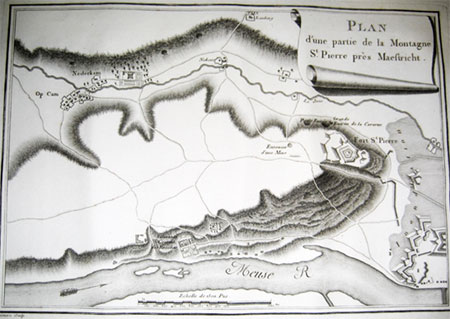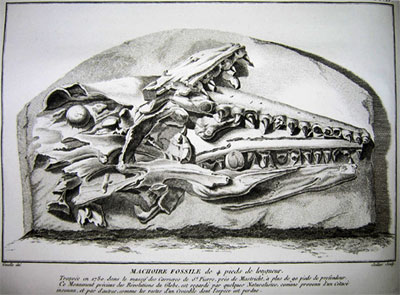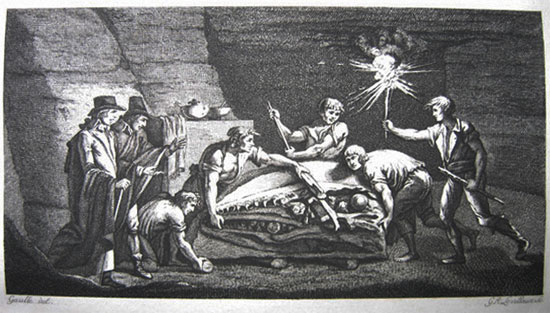
FossilsSwimming Reptiles: Mosasaurs / Plesiosaurs / Turtles Flying Reptiles: Pteranodons Bony Fish: Xiphactinus / Gillicus / Saurodon / Pentanogmius / Pachyrhizodus / Cimolichthys / Apsopelix / Enchodus / Ichthyodectes / Protosphyraena Sharks: Cretoxyrhina / Squalicorax / Ptychodus / Rhinobatos Invertebrates Crinoids: Uintacrinus Clams & Oysters: Inoceramus / Rudistes / Ostrea congesta Cephalopods: Spinaptychus & Rugaptychus / Niobrarateuthis bonneri Birds: Hesperornis / Ichthyornis Other Niobrara fossils: Coprolites / Fossil Tree Other Resources: Geology of Western Kansas / Bonner Fossil Hunters / Oceans of Kansas (off-site) Origins of the MosasaurFirst found in the chalk of Maastrict, Netherland in 1778, this mosasaur was thought to be the gigantic skull of a crocodile, but later and subsequent research showed this was actually a representative from an extinct group of lizards. This specimen was the first fossil specimen to be described as an extinct creature—other fossil species had been found, but were erroneously described as animals still living. W. D. Conybeare, an English geologist, first proposed the name mosasaur, meaning “marine serpent-like reptile.”
Pictures from: Histoire Naturelle de La Montagne de Saint-Pierre De Maestricht, by Faujas-Saint-Fond, Professor of Geology, National Museum of History Paris, 1799. Thanks to William Ashworth and Bruce Bradley at the Linda Hall Library in Kansas City, Missouri for letting us hold, photograph, and turn the pages of this rare book. ©2015 Keystone Gallery / Photos © Barbara Shelton unless otherwise noted |




